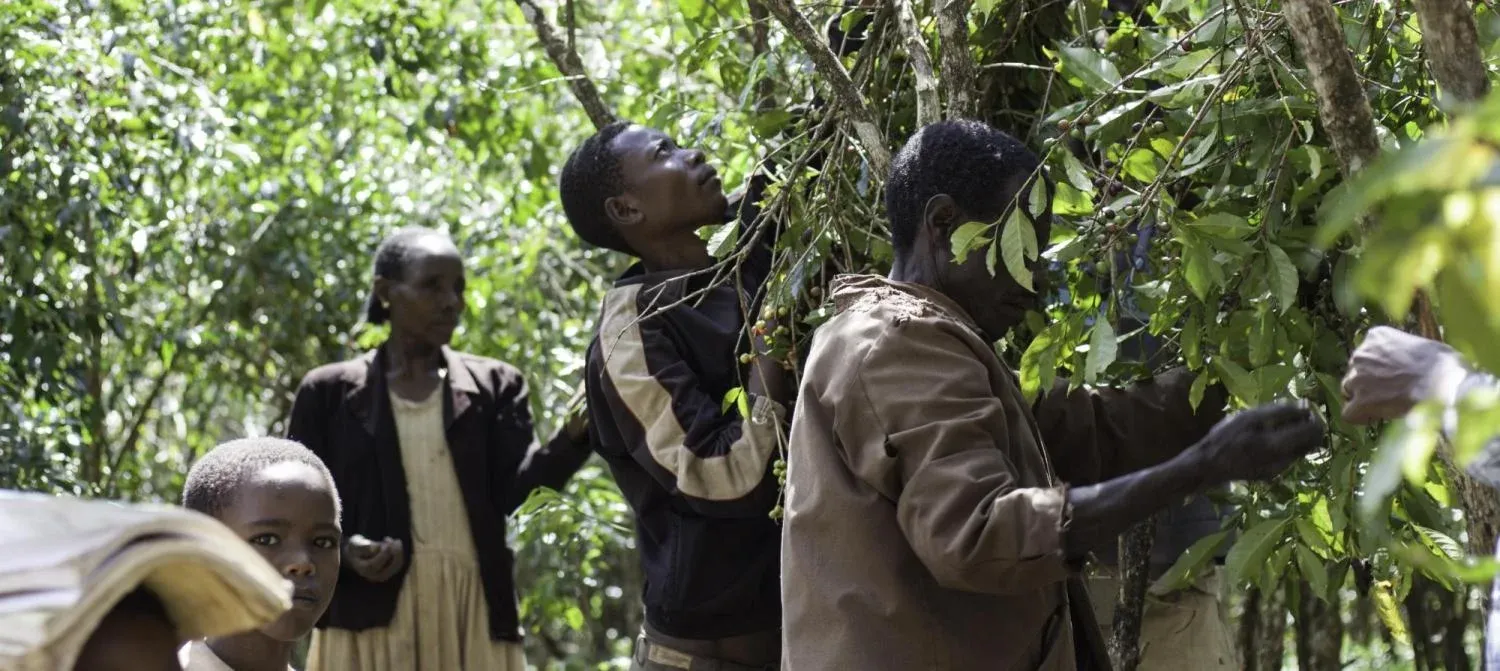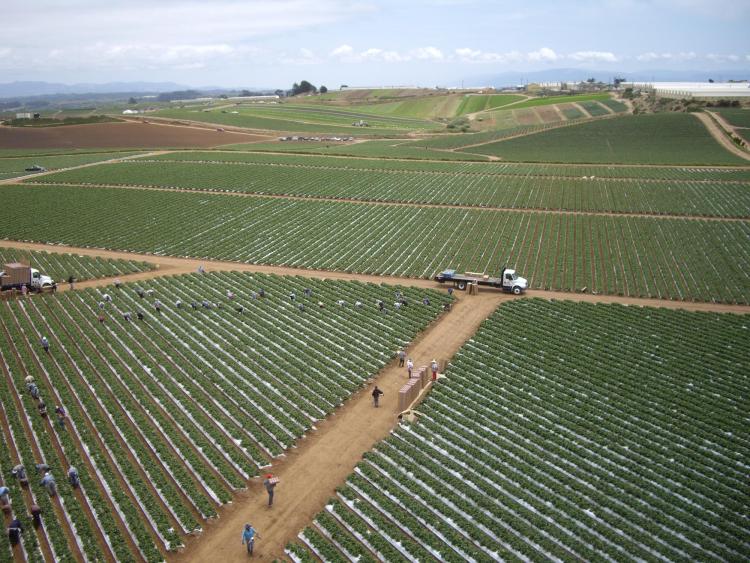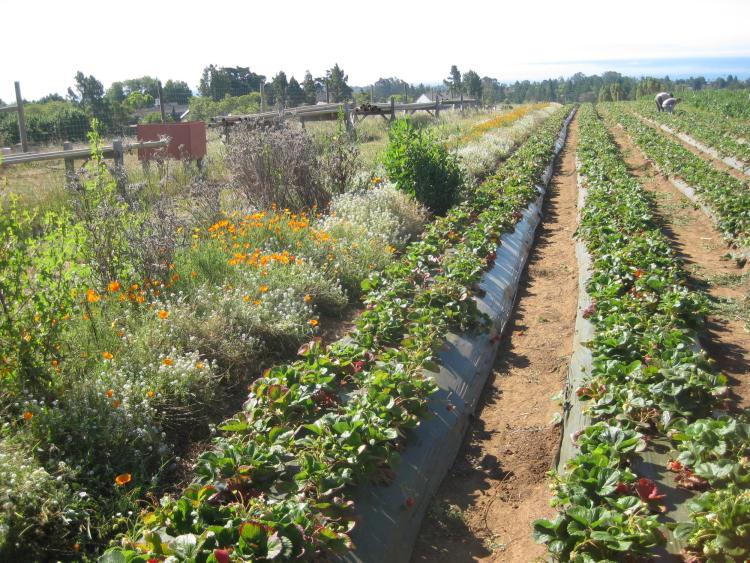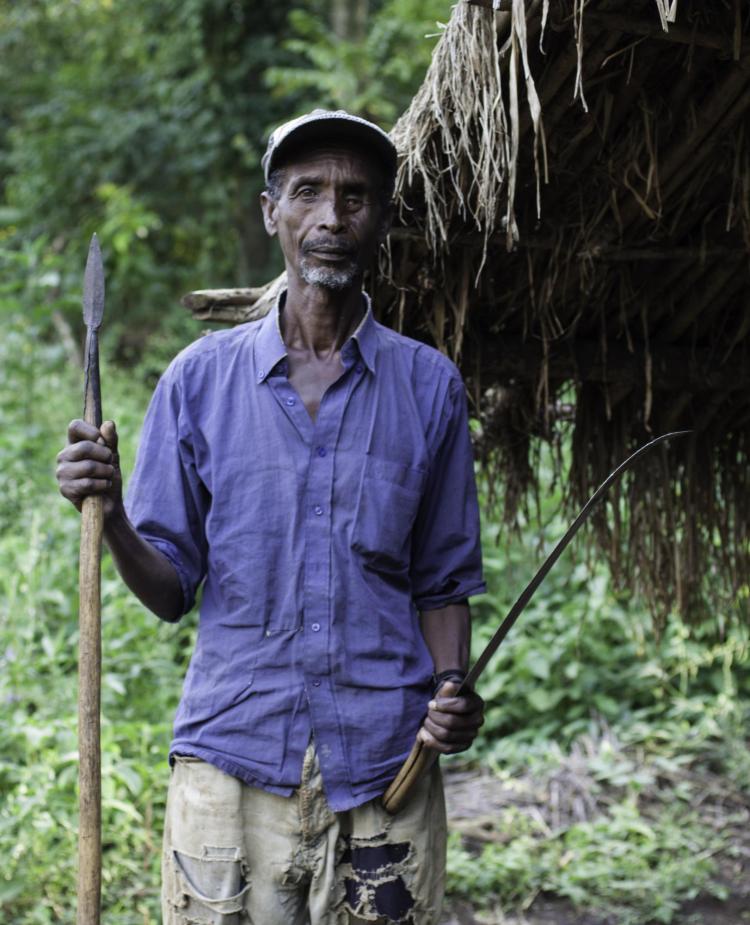‘Diverse’ agriculture benefits people and the environment at the same time

Family members harvest coffee beans on a small-scale farm in Yirgacheffe, Ethiopia. (Credit: Zia Mehrabi)
Rotating crops, conserving soil nutrients and deploying other strategies to “diversify” agriculture all at the same time can deliver major benefits for the environment and people alike—including increased crop yields and improved food security for entire communities.
That’s the take-home message of a landmark new study, including researchers from more than 15 nations and data from 2,655 farms on five continents. The team published its findings April 4 in the journal Science.

A "monoculture" strawberry farm in California. (Credit: Claire Kremen)

A "diversified" strawberry farm, also in California, where berries grow alongside other plants. (Credit: Claire Kremen)
“This is evidence that this can actually work—we can imagine agricultural systems that are more diverse and serve people and nature at the same time,” said Zia Mehrabi, a co-author of the new study and assistant professor of environmental studies at CU Boulder.
The study comes as farms across much of the world are increasingly growing just one type of crop or raising a single kind of animal—a transition to “monoculture” agriculture that may bring with it a wide range of risks, including the loss of soil nutrients and spreading pest outbreaks. In the United States, the number of farms in the country dwindled in 2022 to its lowest level since before the start of the Civil War, according to the U.S. Department of Agriculture. Those remaining farms have mostly gotten bigger and simpler.
The research carries a stark message, said Laura Vang Rasmussen of the University of Copenhagen in Denmark who, along with Ingo Grass of the University of Hohenheim in Germany, served as lead author of the paper.
"Drop monoculture and industrial thinking and diversify the way you farm—it pays off," Rasmussen said.
A new take on a hot topic
The research takes a new approach to examining a hot topic in many environmental circles: agricultural diversification.
The term captures a wide range of strategies for growing more than just a single crop on a single farm, year after year. In some cases, farmers might rotate between seeding a field with corn one year, then beans the next and okra the year after. In others, they might plant cover crops to keep their soils from washing away in the off season or even encourage healthy populations of earthworms underground.
Previous studies have tended to assess these strategies individually and have delivered mixed results, said Mehrabi, who leads the Better Planet Laboratory.
In the new research, he and his colleagues tried a different approach: They used a combination of participatory methods and statistical tools to dive into data from 24 study systems. Their results captured information on everything from massive strawberry operations in the United States to small maize fields in Malawi and palm orchards in Indonesia. The study emerged from a larger research effort led by Mehrabi and Claire Kremen of the University of British Columbia in Canada.
“It was a massive undertaking,” Mehrabi said.
The group discovered that farmers and ranchers can achieve many more benefits if they employ several agricultural solutions in tandem, rather than just one at a time. For Mehrabi, the study reveals a new vision for food around the globe—one in which farms and pastures work less like factories for churning out calories and more like healthy natural ecosystems.
“If you look at how ecosystems operate, it’s not just plants growing alone. It’s not just animals or soil,” he said. “It’s all of these things working together.”

In San Martín, Meta, Colombia, a man directs cows on a farm that practices "rotational grazing." (Credit: Juan Arrendondo)
Making farms complex again
To explore that idea, the group brought together researchers from around the world to share their experiences working with real farmers.

A nursery warden stands guard at the Yayu Coffee Forest Biosphere Reserve in Ethiopia where people harvest coffee in diverse systems (Credit: Zia Mehrabi)
The researchers discovered that elusive “win-wins” in agriculture may be possible. Take livestock diversification, in which farmers might raise cows or chickens on the same farm as crops. According to the team’s analysis, that approach can increase the amount of food that a farm produces, while reducing damage to soil and environmental pollution. But the research also found that the benefits of livestock diversification increase, and the downsides shrink, when farmers pair it with other diversification strategies.
In many cases, Mehrabi said, more diverse farms can deliver extra benefits because they can better weather natural disasters like droughts or heat waves. In other cases, the positives are more subtle. If small-scale farmers grow fruit trees amid their crops, for example, they can eat those bananas or papayas themselves while selling the rest of the harvest.
“The crazy thing is that the positive effect of adding multiple diversification practices is true across wildly different contexts,” he said. “It works on industrial farms in the United States and in small-scale maize farms in Malawi.”
Overcoming barriers
He and his colleagues acknowledge that finances can be a barrier to making the switch to diverse agriculture. Farmers might need to purchase one set of machines to harvest corn and a different set to harvest fruit.
But governments already spend huge sums to buffer the agricultural industry. Some nations, for example, subsidize farmers so that they can grow water-intensive crops in areas that don’t get a lot of rain. That money might be better spent, Mehrabi said, in helping farmers diversify.
In the end, he hopes that the study will help people realize that a different future for the world’s food may be possible:
“Hopefully, this will inspire people to be creative and even push the boundaries of what the human species can achieve.”


